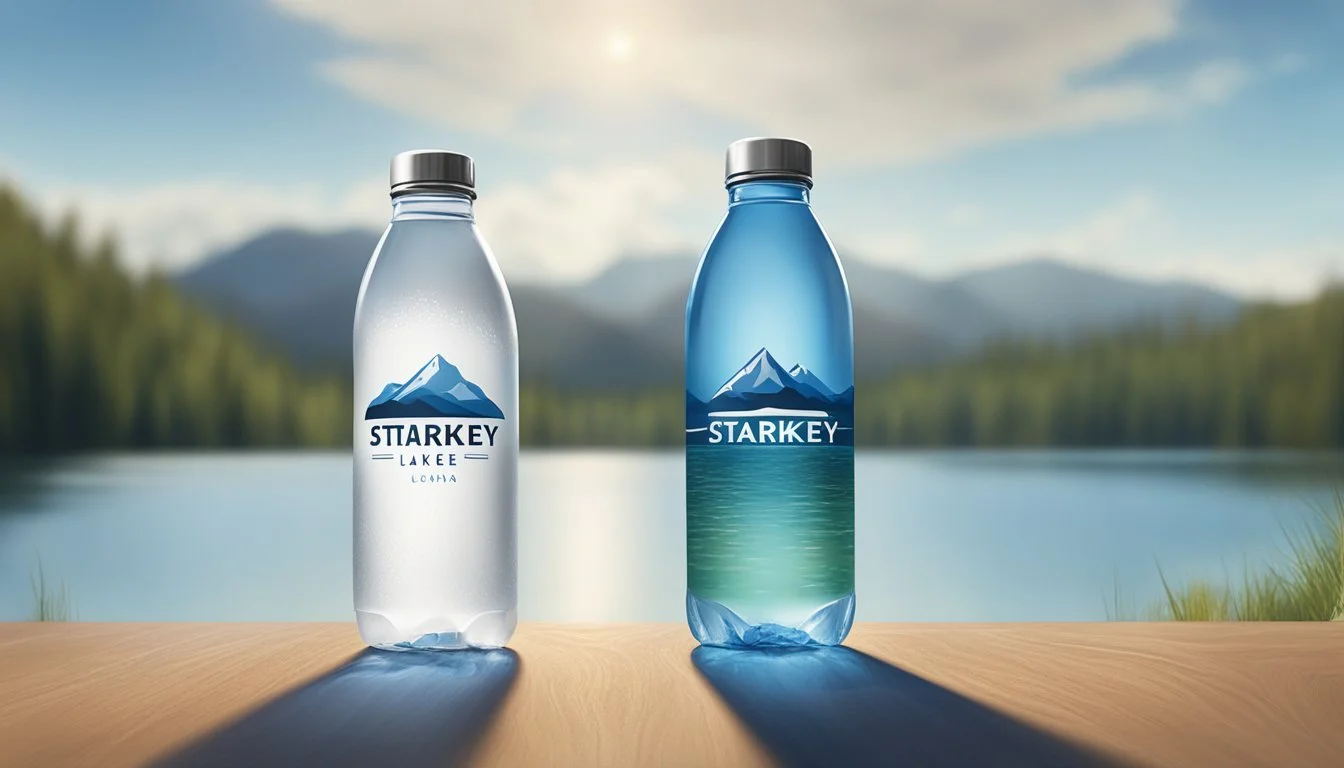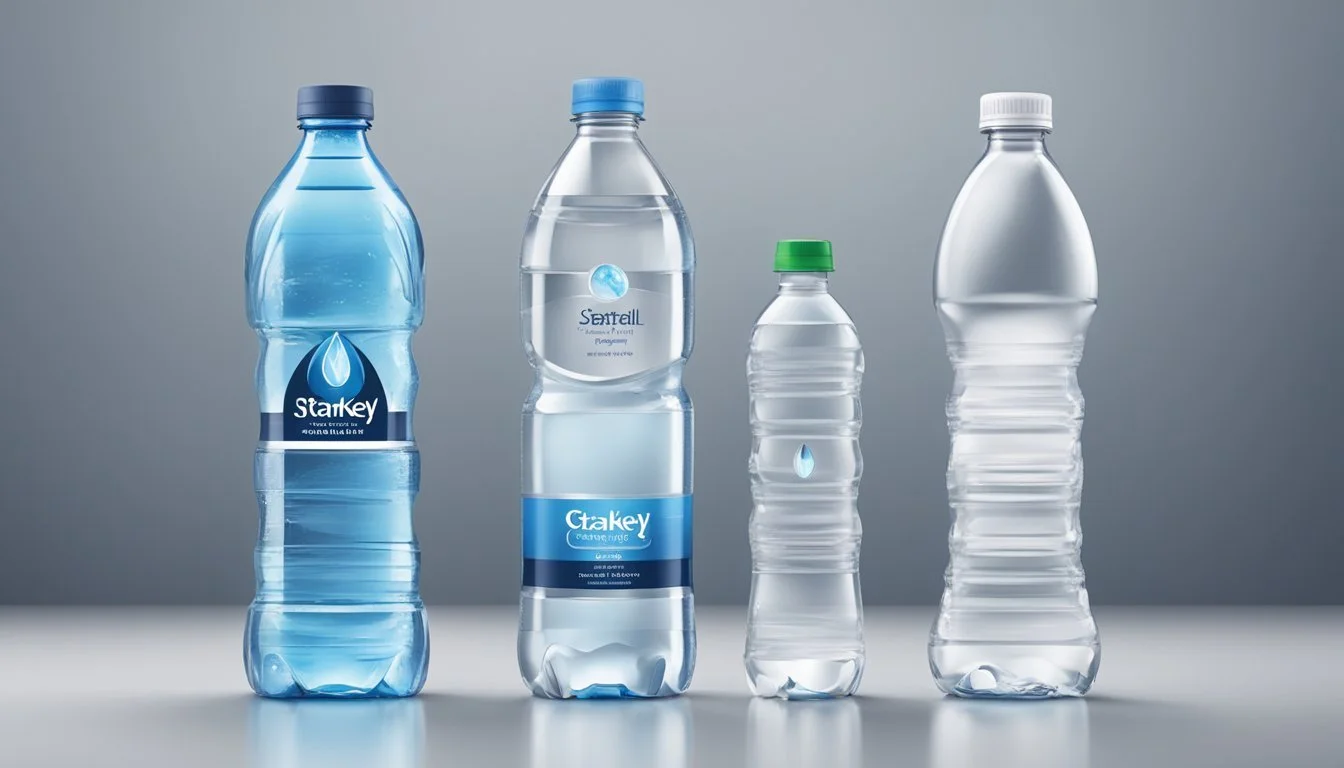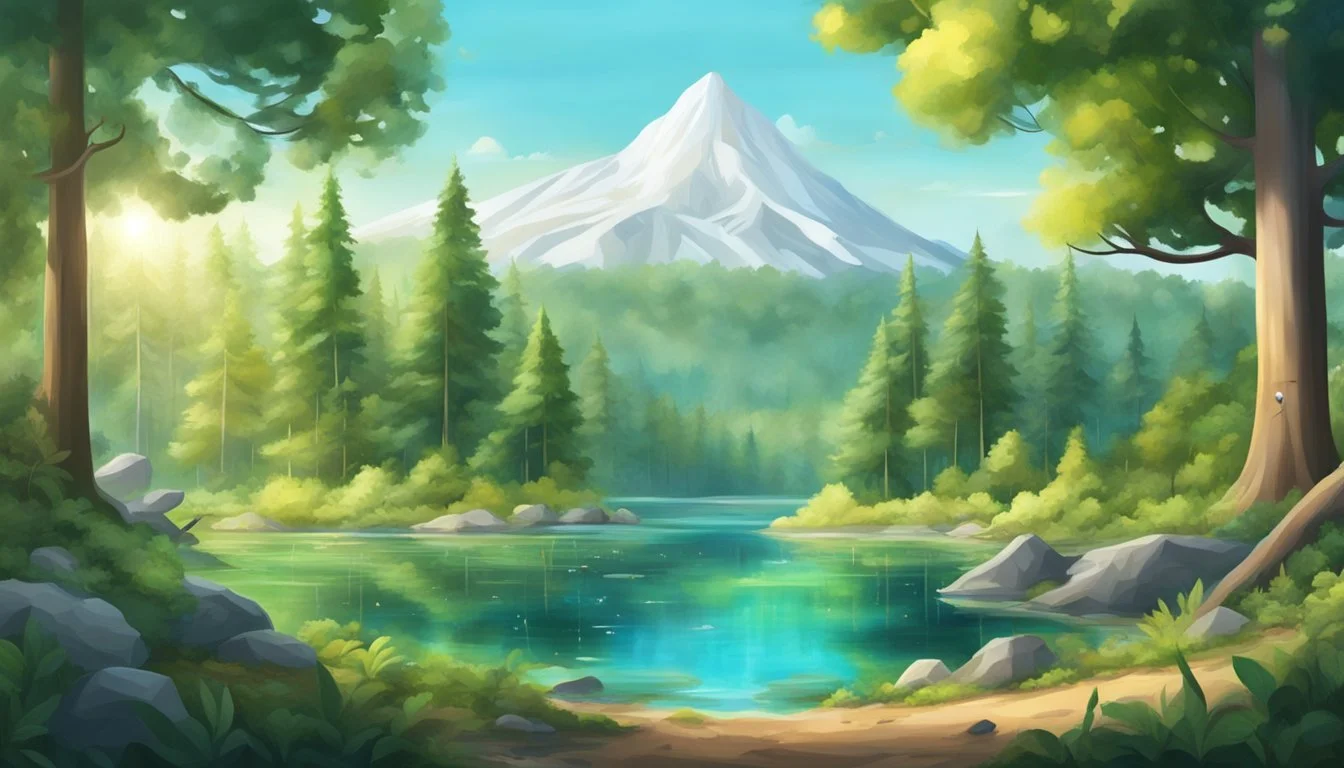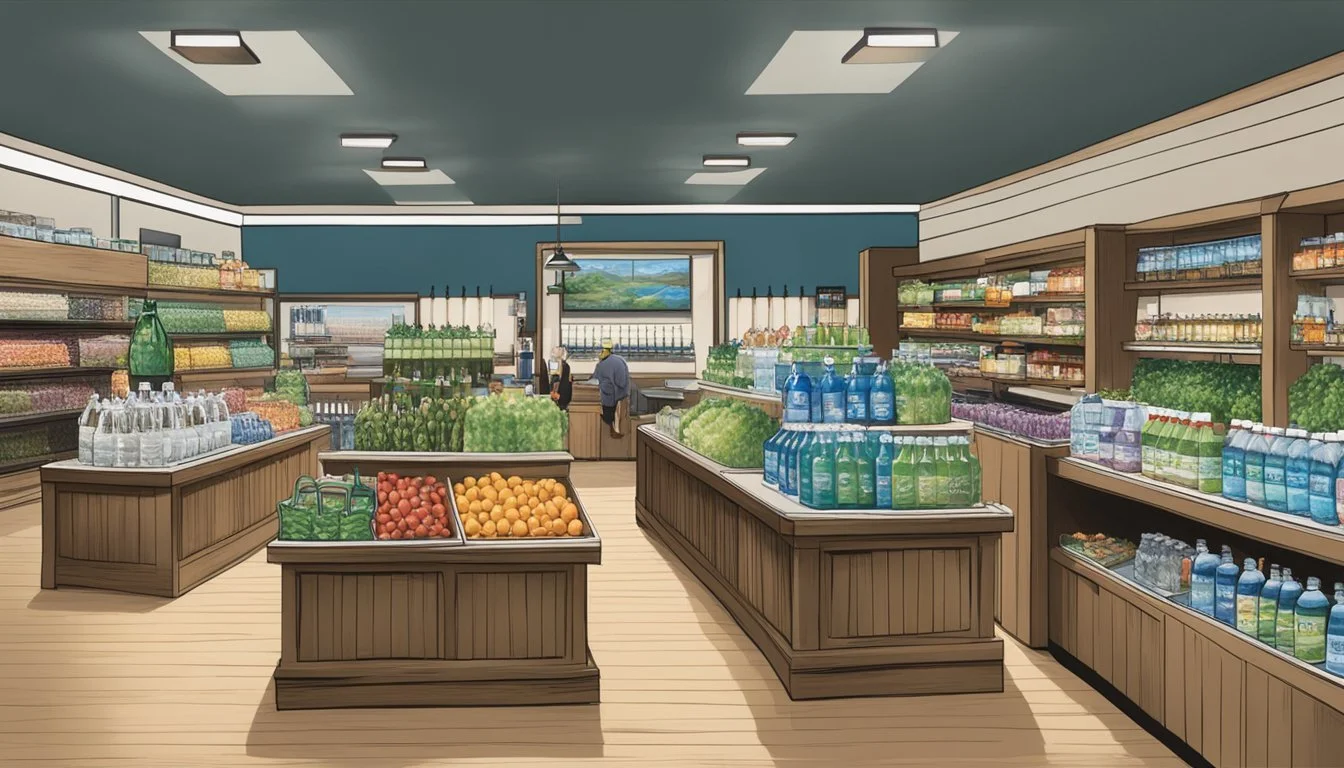Starkey vs. Crystal Lake
An In-Depth Bottled Water Comparison
Choosing the right bottled water often feels like navigating a sea of options. Starkey and Crystal Lake are two prominent brands that frequently spark debate. With Starkey originating from geothermal springs and Crystal Lake sourced from naturally filtered groundwater, the differences in their origins set the stage for a unique comparison.
Consumers often prefer Starkey for its crisp, slightly mineral-rich taste, and believe it provides a more refreshing experience. Crystal Lake, on the other hand, prides itself on its purity and consistent neutral flavor, which makes it a favorite for those who want a water that blends seamlessly with their everyday activities. Each has its loyal fan base, which highlights the subjective nature of taste and personal preference.
Another crucial factor is the packaging and environmental impact. Starkey typically uses bottles that emphasize a commitment to sustainability, while Crystal Lake opts for lightweight, recyclable options that aim to reduce the carbon footprint. When stacked against each other, these brands offer distinct advantages, making the choice between them not just about taste but also about values and lifestyle.
Comparing Water Sources
Starkey Spring Water and Crystal Lake originate from unique sources, each contributing to their distinct characteristics. Both brands pride themselves on the purity and natural qualities of their water, though their sources vary significantly in location and composition.
Origin of Starkey Spring Water
Starkey Spring Water is sourced from a geothermal spring located in the remote wilderness of the Idaho mountains. This ancient spring water is steeped in history, as it has been naturally filtered through volcanic rock over thousands of years.
The water is bottled directly at the source to maintain its purity and minerality. With a total dissolved solids (TDS) count of approximately 180 mg/L, Starkey Spring Water is noted for its balanced mineral content. This natural filtration process through volcanic rock imparts a subtle, natural flavor that is free from contaminants.
Origin of Crystal Lake
Crystal Lake water also comes from natural springs but is primarily drawn from underground sources located in a protected area. Unlike Starkey’s volcanic origin, Crystal Lake's water is filtered through layers of sedimentary rock and gravel, which helps in removing impurities naturally while retaining essential minerals.
This spring water is renowned for its affordability and clean taste, making it a popular choice among consumers. The water undergoes minimal treatment to ensure it remains as close to its natural state as possible. Crystal Lake takes careful measures to protect its water sources from contamination, ensuring a fresh and reliable product.
By focusing on the different origins of these bottled waters, it's clear that both brands offer unique benefits to the consumer, based on their distinct sources and natural filtration processes.
Production and Bottling Processes
Both Starkey and Crystal Lake employ unique production and bottling methods that emphasize water purity and packaging quality.
Starkey's Filtration and Bottling
Starkey sources its water from geothermal springs, which contribute to the natural purity of the product. The water undergoes a stringent filtration process that eliminates impurities while preserving beneficial minerals.
Post-filtration, Starkey ensures the water remains untouched during the bottling process. This involves using state-of-the-art technology to maintain hygiene and safety standards. Starkey opts for glass bottles, which are environmentally friendly and help in retaining the water's taste, making it an excellent choice for eco-conscious consumers.
Crystal Lake's Filtration and Bottling
Crystal Lake sources its water from protected springs within the United States. The company implements a robust filtration process designed to remove contaminants while keeping the water's natural minerals intact.
Crystal Lake prioritizes convenience in its bottling process by using BPA-free plastic bottles. Although these bottles are portable, they also ensure that the water remains safe and free from harmful chemicals. This dual focus on purity and portability makes Crystal Lake a appealing choice for everyday hydration needs.
Quality and Safety Standards
When comparing Starkey and Crystal Lake bottled waters, it's essential to understand how each brand adheres to quality and safety regulations. Key factors include compliance with EPA and FDA standards, and the results of rigorous water testing and certifications.
EPA and FDA Compliance
Both Starkey and Crystal Lake must comply with strict standards set by the Environmental Protection Agency (EPA) and the Food and Drug Administration (FDA) to ensure safe drinking water.
The EPA oversees public water systems, setting limits for contaminants such as lead and heavy metals. For bottled water, the FDA enforces these regulations, including maximum contaminant levels. This means both Starkey and Crystal Lake need to meet standards that prevent exposure to harmful chemicals and metals.
Compliance with these regulations is crucial for consumer safety. Tests for contaminants such as PFAS chemicals and arsenic are conducted routinely. Any levels exceeding the allowable limits can lead to product recalls and strict actions from regulatory bodies.
Water Testing and Certifications
Regular water testing is a standard practice for ensuring the safety of bottled water. Starkey and Crystal Lake undergo frequent testing for a wide range of contaminants, including heavy metals, lead, and other harmful substances.
Both brands must provide transparent results that are usually available on their websites or through customer service. These tests also verify the absence of PFAS chemicals, which have been found in other bottled water brands and are known to be hazardous over time.
Bottled water companies often seek additional certifications to bolster consumer confidence. Certifications from independent organizations can attest to the purity and safety of their water. Regular testing and compliance with these certifications reinforce a brand's commitment to providing safe drinking water.
Chemical Composition and Health Benefits
Starkey and Crystal Lake bottled waters differ significantly in their chemical compositions, impacting their respective health benefits. Key elements to consider include their electrolyte content and overall mineral profiles, particularly focusing on calcium and magnesium levels.
Electrolyte Content Comparison
Starkey bottled water is known for its balanced electrolyte content, which includes calcium, magnesium, and potassium. These electrolytes are essential for muscle function, nerve transmission, and hydration balance. Starkey's water is also slightly alkaline, with a pH level around 9, which can help neutralize acidity in the body.
Crystal Lake, on the other hand, has a different electrolyte profile. It typically contains lower levels of magnesium but higher calcium content. Calcium is crucial for bone health and plays a role in various cellular functions. Magnesium, although present in smaller amounts, is vital for muscle relaxation and nerve function. Crystal Lake's water tends to have a neutral pH, making it suitable for those who prefer less alkalinity.
In summary, while Starkey offers a more comprehensive range of electrolytes with a higher pH, Crystal Lake focuses on higher calcium content with a neutral pH, catering to different hydration and health preferences.
Taste and Consumer Preference
When comparing Starkey and Crystal Lake bottled waters, it's essential to consider their taste profiles and how consumers rate their overall flavor based on both personal preference and formal taste tests.
Flavor Profiles and Palate
Starkey is known for its alkaline nature, featuring a higher pH level around 9. This gives it a smooth, almost creamy texture on the palate. The higher mineral content may be noticeable, creating a more robust flavor that some consumers appreciate.
Crystal Lake, on the other hand, tends to have a neutral taste profile as it is sourced from municipal supplies and undergoes extensive purification processes. This results in a clean, crisp taste with minimal mineral aftertaste, catering to those who prefer a pure and straightforward water flavor.
Customer Taste Tests and Reviews
Multiple taste tests conducted by both informal consumers and professional water sommeliers reveal a divided preference. Starkey often receives high marks for its unique texture and alkaline quality, though some find the minerality off-putting. Those who enjoy mineral-rich waters tend to favor Starkey.
Crystal Lake, despite a more uniform profile, scores well for its consistency and widespread appeal. Consumer reviews frequently mention its refreshing nature and lack of any particular aftertaste, making it popular among those who prioritize hydration without additional flavors.
In conclusion, the preference between Starkey and Crystal Lake often comes down to individual taste, with Starkey attracting a niche market and Crystal Lake appealing to a broader audience.
Environmental Impacts and Sustainability
Starkey and Crystal Lake have committed to minimizing their environmental footprints by enhancing bottle recycling and reusability, and implementing water conservation initiatives. Both brands prioritize environmentally friendly practices to ensure a more sustainable option for consumers.
Bottle Recycling and Reusability
Starkey Water uses recyclable plastic for its bottles, aiming to reduce waste. They boast a high rate of post-consumer recycled content in their packaging. Consumers are encouraged to recycle through clear labeling, and the company partners with local recycling programs to facilitate this process.
Crystal Lake takes a different approach, emphasizing glass bottles that can be reused multiple times. The use of glass ensures a higher rate of bottle reuse and a lower environmental impact due to less frequent disposal. Glass bottles also do not degrade in quality, offering a longer lifecycle compared to plastic.
Both brands strive to make their bottles environmentally friendly, yet the methods differ significantly. Starkey’s focus on plastic may pose challenges with recycling infrastructure. Conversely, Crystal Lake’s glass bottles offer a durable and less wasteful option but are heavier and have a higher transportation footprint.
Conservation Efforts
Starkey places a strong emphasis on responsible water sourcing. They utilize spring water from a protected source, ensuring that local ecosystems remain unharmed. By adopting strict extraction quotas, Starkey minimizes water wastage and protects the surrounding environment.
Crystal Lake invests heavily in water conservation technologies. They support projects that improve watershed management and promote sustainable water use. Their bottling plant utilizes water-efficient systems to reduce usage during the production process, furthering their goal of eco-friendly packaging.
Moreover, both brands contribute to global conservation initiatives. Starkey collaborates with numerous environmental organizations, providing funding and resources for projects aimed at conserving natural water resources. Crystal Lake participates in community-based conservation programs, promoting awareness and education on sustainable water use practices.
Market Presence and Brand Perceptions
Starkey and Crystal Lake are prominent brands in the bottled water industry, each with distinct marketing strategies and varying degrees of consumer trust and loyalty.
Marketing Strategies
Starkey is positioned as a premium brand, often found in Whole Foods and other upscale grocery stores. Their marketing focuses on the water's purity, sourced from ancient geothermal springs, which appeals to health-conscious consumers. Advertisements highlight the water's mineral content and natural origin.
Crystal Lake, conversely, emphasizes affordability and widespread availability. It is marketed in grocery stores, convenience stores, and larger retail chains. This brand uses social media campaigns to highlight its cost-effectiveness and reliability. The messaging consistently targets cost-sensitive consumers who seek quality without premium prices.
Consumer Trust and Loyalty
Consumer trust in Starkey is bolstered by its association with Whole Foods, known for its stringent quality standards. Reviews often cite its clean taste and perceived health benefits. Loyalty is built on consistent quality and the brand's premium positioning, attracting repeat buyers who prioritize purity.
Crystal Lake enjoys broad consumer trust due to its consistent availability and affordability. Being competitively priced, it appeals to a wider audience, including families and budget-conscious shoppers. The brand's responsive customer service and active social media presence help maintain and grow this trust, ensuring a loyal customer base that appreciates both value and quality.
Comparative Pricing and Value
When comparing Starkey and Crystal Lake bottled water brands, it's essential to examine their prices and value relative to the quality and consumer expectations.
Retail Prices and Affordability
Starkey is positioned as a premium brand with a pricing strategy reflecting its high-quality artisanal offering. A standard 1-liter bottle retails around $2.50-$3.50, often found in upscale grocery stores and natural food markets.
Crystal Lake offers a more budget-friendly option without compromising on quality. A 1-liter bottle is typically priced between $1.00-$1.50, making it accessible to a broader audience. Crystal Lake is often available in bulk, providing additional savings for consumers who choose this option.
Both brands use retail distribution to reach consumers, but Starkey's higher price might limit its appeal to price-sensitive buyers. Crystal Lake, on the other hand, caters well to those looking for a balance between cost and quality.
Assessing Cost-to-Quality Ratio
The cost-to-quality ratio is a crucial factor when evaluating bottled water options. Starkey boasts mineral-rich content and a refreshing taste that validates its higher price point. Consumers seeking premium hydration often feel justified in paying more for Starkey due to its perceived health benefits and artisanal qualities.
Crystal Lake appeals to consumers who prioritize affordability without sacrificing quality. The brand maintains consistent taste and reliability, ensuring it remains a competitive choice in the market. For budget-conscious buyers, Crystal Lake offers significant value, often outperforming more expensive brands in terms of satisfaction.
Both Starkey and Crystal Lake deliver distinct advantages aligned with their pricing strategies, ensuring a range of choices for various consumer preferences in the bottled water market.
More About Starkey
Icelandic Glacial vs Starkey: Which Bottled Water is Better?
Mountain Valley Spring Water vs Starkey: Which Bottled Water is Better?
Starkey vs Kirkland Signature: Which Bottled Water is Better?
Starkey vs Richard's Rainwater: Which Bottled Water is Better?
Starkey vs Whole Foods Italian Still Mineral water: Which Bottled Water is Better?
More About Crystal Lake
Aqua Carpatica vs Crystal Lake: Which Bottled Water is Better?
Cascade Mountain vs Crystal Lake: Which Bottled Water is Better?
Core Hydration vs Crystal Lake: Which Bottled Water is Better?
Crystal Geyser vs Crystal Lake: Which Bottled Water is Better?
Crystal Lake vs Essence pH10: Which Bottled Water is Better?
Crystal Lake vs Proud Source: Which Bottled Water is Better?
Hawaii Volcanic vs Crystal Lake: Which Bottled Water is Better?
Hawaiian Springs vs Crystal Lake: Which Bottled Water is Better?
Ice Mountain vs Crystal Lake: Which Bottled Water is Better?
Icelandic Glacial vs Crystal Lake: Which Bottled Water is Better?
Kirkland Signature vs Crystal Lake: Which Bottled Water is Better?
Liquid Death vs Crystal Lake: Which Bottled Water is Better?
Mountain Valley Spring Water vs Crystal Lake: Which Bottled Water is Better?
Nestle Pure Life vs Crystal Lake: Which Bottled Water is Better?
Poland Spring vs Crystal Lake: Which Bottled Water is Better?
Purely Sedona vs Crystal Lake: Which Bottled Water is Better?
Richard's Rainwater vs Crystal Lake: Which Bottled Water is Better?
San Pellegrino vs Crystal Lake: Which Bottled Water is Better?
Simple Truth vs Crystal Lake: Which Bottled Water is Better?
Solan de Cabras vs Crystal Lake: Which Bottled Water is Better?
Talking Rain AQA vs Crystal Lake: Which Bottled Water is Better?
Whole Foods 365 vs Crystal Lake: Which Bottled Water is Better?
Whole Foods Italian Still Mineral water vs Crystal Lake: Which Bottled Water is Better?









